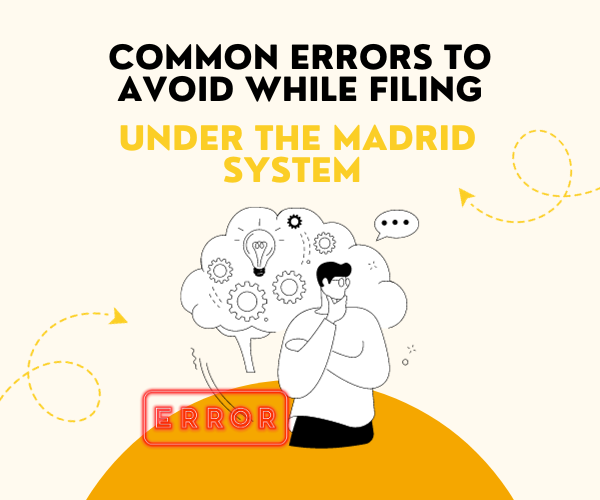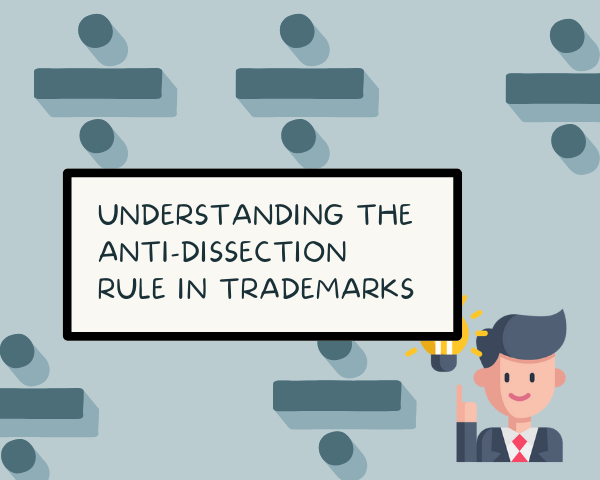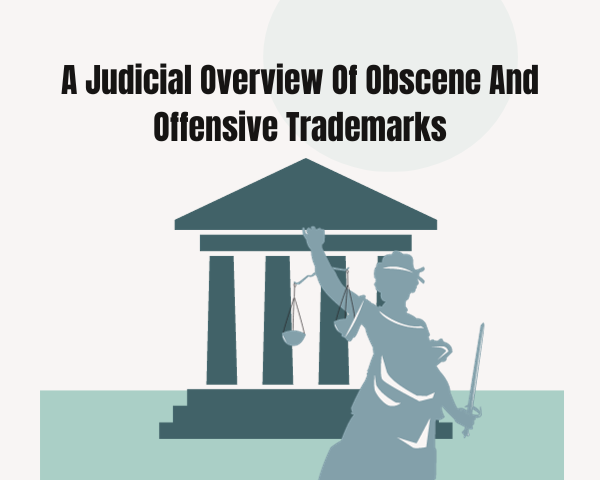The Madrid System stemmed from a need for a unified trademark platform which would serve as a common path for protecting a trademark globally or at least in multiple jurisdictions. Administered by WIPO, it is an indispensable tool when it comes to efficiency and convenience for filing and protection of trademarks. Brand owners and businesses, small and large alike, are often expanding, especially considering the growth of the global economy where there are numerous opportunities across countries. In this global marketplace, the Madrid System simplifies filing procedures, reducing administrative burdens as well as costs pertaining to single jurisdiction filings.
While the entire process has been simplified, there are certain common errors that applicants make which can result in wasted time, energy and efforts. In this article, we aim to analyze the common mistakes made by applicants and the ways to ensure that the error margin remains negligible.
Rule 11 of the Common Regulations under the Madrid Agreement Concerning the International Registration of Marks and the Protocol Relating to that Agreement deal with irregularities except those pertaining to goods and services classification.
Within this procedural framework, there is a distinction between irregularities which are to be remedied by the office of origin versus those that are to be remedied by the application. Concerning the former some of the mistakes noticed are either the application lacks the official form or it has defects. Additionally, issues with entitlement, date or number of the basic application/registration being absent, certification not being in order, absence of the office’s signature, insufficiency of fees, which the office collects and forwards; or absence of Form MM18 are all issues to be rectified by the Office of Origin.
There are often various errors within Madrid applications by the Applicants themselves, including inadequate mailing addresses, unclear reproductions of the mark, and the absence of transliteration for the mark. Additionally, common irregularities involve providing a description of the mark in a non-working language, direct payment of insufficient fees by the applicant, and the absence of Form MM18.
INACCURACY IN CLASSIFICATION OF GOODS AND SERVICES
An international application involves the process of demarcating the goods and services under which protection is sought, similar to the domestic applications of various countries. The accuracy to be maintained in an international application is high as it must precisely correspond to the goods and services provided under the International Classification of Goods and Services and must not be vague or incomprehensible. The goods and services must be grouped in the appropriate class and each of these groups must be preceded by the correct number of as under the classification. Some aspects to keep in mind to avoid issues with goods and services classification are to thoroughly examine the most recent edition of the NICE classification along with its explanatory notes, general remarks and the WIPO internal guidelines. It is pertinent to ensure that the latest edition of the classification is referred to as there are multiple changes where certain terms may even be shifted from one class to the other. Further, as a general practice, applicants must ensure that each term under the classification should be separated with a semicolon whereas different words or goods within the same term must be separated with a single comma. In order to ensure compliance, the applicant can refer to the Madrid Goods and Services Manager.
In a scenario where the International Bureau sends an irregularity notice based on the classification of goods and services, the office of origin as well as the applicant is notified along with substitute terms or amended goods and services with deletions as per the discretion of the International Bureau. The office of origin then has three months to provide a proposal with amended terms. If the same is not made, the International Bureau will process the application in a manner where, if the class is demarcated then the same terms will proceed with the indication that the Bureau considers the term vague or incomprehensible or linguistically incorrect. Alternatively, if there is no class specified the Bureau has the discretion to delete the said terms however, the same must be notified to both the applicant and the office of origin.
ABSENCE OF FORM MM18
A common requirement that is missed out by applicants is attaching Form MM18 with their Madrid applications. Form MM18 is essentially required when one of the designated countries is the United States of America, where this form acts as a declaration of intention to use the mark in the USA. This declaration of intent acts as a confirmation of several key factors which includes an attestation of the applicant’s genuine intention to use the mark in business activities pertaining to the goods or services listed in the international application. Additionally, if the form is signed on behalf of the applicant, then it verifies the veracity of the authorized signatory along with their bona fide intent w.r.t the applicant’s legitimate right to use the mark the United States. This acts as a declaration of the accuracy and veracity of the information provided within the form, whereby Form MM18 is a crucial requirement for an international application with the US as a designated country. Additionally, it is important to ensure that the form is filled out correctly as per the requirements before it is attached to the application. This includes the signature, name and title of the applicant along with the date of execution. Details regarding the basic application number and date of the basic application must also be duly filled out.
In India, alternatively, if the applicant has not attached Form MM18, the Indian Trade Marks Registry will send a deficiency notification which has to be complied with within a period of 30 days. If the deficiency is not remedied, the application will not be forwarded to the International Bureau.
INADEQUATE FEE AND SECOND LANGUAGE
One of the most frequent problems encountered in Madrid Applications relates to insufficient fees or inaccurate communication of fee-related information. When submitting payment, it’s essential to include specific details such as the payer’s name, complete address, application type, the trademark number (either the basic registration or basic application number for registrations, or the international registration number for other purposes), the trademark’s name, and the name of the trademark’s holder, especially if it differs from the payer’s information. An applicant can analyze the fee structures by accessing the Madrid Fee calculator.
The aspect of second language has to be duly addressed in an application. These have to be limited to French, German, Italian or Spanish. While the international application’s language dictates the language of the proceeding, a second language is accepted as a possible alternative for any opposition, revocation or invalidity proceedings.
TRANSLATION AND TRANSLITERATION
It is crucial to address the translation or transliteration of a mark when it’s not originally in English. Translation conveys the word’s meaning, so if the applicant’s mark is in a non-English language with a different script, it’s important to provide clarity about its meaning in the application. Additionally, when transliterating the mark to a script similar to English phonetically, it’s essential to offer clarification.
APPLICATION CHECKLIST
The Madrid system has brought in considerable ease for filing of applications by providing a unified portal. Simultaneously it also dictates thorough requirements in order to comply with the necessities of multiple jurisdictions. A harmonized system has to ensure that applications move in harmony, by reducing the possibility of error, friction, ambiguity and possible dispute. The resources available on the WIPO website provide comprehensive guidance towards filing applications, considering the time, effort and capital that is invested by an applicant. Further to this, it is important to learn from the common mistakes made by applicants and curate a checklist for an international application. This can include documents required such as Form MM18, or even information based categories such as determining the goods and services to be in compliance, translation and transliteration to be rechecked, calculation of the fee involved in the process and lastly a thorough detailed check of the application.




